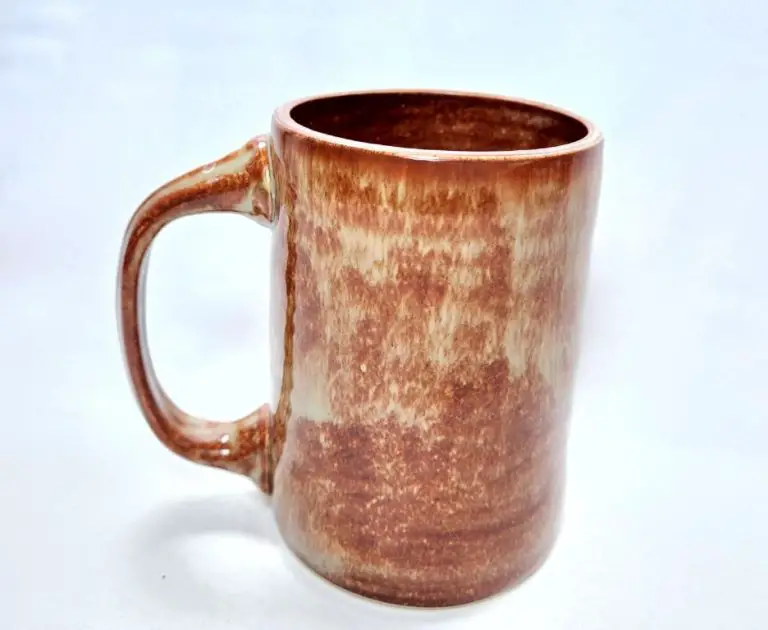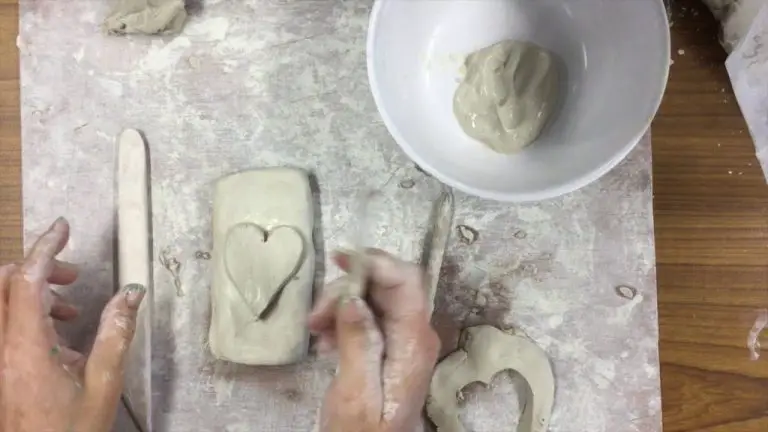Can You Open A Kiln At 250 Degrees?
Working with ceramic kilns requires careful attention and caution. While firing clay and glazes in a kiln is an exciting part of creating pottery and ceramics, kilns reach extremely high temperatures that can pose safety hazards if proper precautions are not taken. Knowing when it’s safe to open a hot kiln is crucial to avoiding potential burns or damage to your pieces.
This article will provide ceramic artists, hobbyists, and students with a comprehensive understanding of kiln temperatures, safety concerns, and best practices for opening and unloading kilns. We’ll examine what temperature is too hot for a kiln, how to properly cool down your kiln, kiln ventilation, and alternative approaches if you need access before the kiln has fully cooled. With the right information and precautions, you can feel confident safely operating your ceramic kiln.
What is a Kiln?
A kiln is defined as “an oven, furnace, or heated enclosure used for processing a substance by burning, firing, or drying”[1]. Kilns are commonly used for firing pottery, calcining limestone, or baking bricks[2]. The main purpose of a kiln is to produce extremely high temperatures in order to harden and set materials like ceramic and clay[3].
Kilns are often described as ovens made from materials like brick or clay that can withstand very high heat. The inside chamber of a kiln is called the firing chamber. Kilns use fuels like wood, gas, coal, or electricity to generate high enough temperatures for firing the materials inside. Temperatures can range widely from 900°F to over 2000°F depending on the application.
There are various types of kilns used for different applications including ceramic kilns, glass kilns, and industrial kilns. No matter the type, the fundamental purpose is to fire materials using precisely controlled high heat conditions.
[1] https://www.merriam-webster.com/dictionary/kiln
[2] https://dictionary.cambridge.org/us/dictionary/english/kiln
[3] https://www.dictionary.com/browse/kiln
Kiln Temperatures
Kilns are designed to reach extremely high temperatures in order to fully vitrify clay and ceramic materials. The most common temperature ranges for firing clay are:
- Low-fire: 1600-2100°F (870-1150°C) – cone 06-04. Typical for earthenware.
- Mid-fire: 2100-2300°F (1150-1260°C) – cone 2-4. Typical for stoneware.
- High-fire: 2300-2400°F (1260-1315°C) – cone 7-10. Typical for porcelain and stoneware.
The target temperature depends on the clay body and glazes used. For example, a mid-range stoneware firing would be around cone 6 which is 2165°F (1185°C). It’s crucial to follow the temperature guidelines for the specific clay, glazes, and kiln to achieve proper vitrification and avoid defects.
Firing too low can lead to under-vitrified ware that is more porous and prone to breakage. Firing too high can cause glaze defects like pinholing as well as warping or bloating of the clay body. Staying within the recommend range ensures the clay and glazes mature properly.
Sources:
Guide to Kiln Temperature Ranges for Pottery
Dangers of Opening a Hot Kiln
Opening a kiln before it has fully cooled down can be extremely dangerous due to the risk of severe burns. Kilns can reach temperatures of over 2000°F during firing. Even at 500-600°F, the interior of a kiln is hot enough to cause third degree burns nearly instantly if exposed skin comes into direct contact with the kiln shelves or ware (https://thepotterywheel.com/what-temperature-can-you-open-a-kiln/).
When opening a kiln before it has cooled to at least 250°F, it’s important to exercise extreme caution. Wearing protective clothing like fire-retardant gloves, long sleeves, closed toe shoes, and safety goggles is essential. Even then, exposure to the radiant heat inside the kiln can lead to painful burns in seconds (https://community.ceramicartsdaily.org/topic/13329-opening-kiln-early/).
Rushing to open a hot kiln too quickly also increases the risk of accidentally bumping shelves or ware and causing burns from direct contact. Slow, deliberate movements are necessary. The risk of burns is simply too great to justify opening a kiln before it has cooled to a safer temperature.
When is it Safe to Open a Kiln?
The general consensus among ceramic artists and kiln manufacturers is that it is safest to open a kiln once it has cooled down to room temperature. This is typically between 60-75°F (15-24°C). At these lower temperatures, there is very little risk of thermal shock occurring when removing ware. Thermal shock happens when there is a rapid temperature change in the clay, and can lead to cracks, breaks, and other defects.
Many recommend waiting until the kiln temperature falls below at least 250°F (121°C) before opening the door at all. According to The Pottery Wheel, most ceramicists advise opening the kiln between 125-250°F (52-121°C) to be on the safe side (source). The general guidance is the cooler the better. On the Ceramics subreddit, most users said they open at 100°F (38°C) or less.
Slow Cooling a Kiln
Slow cooling a kiln after firing provides several benefits for ceramic wares. According to Ceramic Arts Network, slower cooling reduces stress on pieces and can help prevent defects like dunting, pinholing, and glaze cracking. This allows the molecular structure to stabilize and prevents thermal shock.
The main reason to slow cool a kiln is for certain types of glazes. Glazes with zinc, rutile, calcium, magnesium, and lithium develop better crystal growth when cooled slowly, resulting in a more brilliant glaze surface.Slow cooling encourages crystal development which improves the final glaze appearance and quality.
In addition, slower cooling may allow gases to escape from the glaze more evenly, reducing pinholes. It also prevents pieces from contracting too quickly, causing cracks or glaze shivering. Overall, slow cooling improves the durability and aesthetic of finished ceramic wares.
How to Check Kiln Temperature
There are two main methods for checking the temperature inside your kiln – using pyrometric cones and thermocouples.
Pyrometric cones are small pyramid shaped indicators made of ceramic material that melt at specific temperatures. To use cones, place one that melts at your target temperature inside the kiln next to your ware. When the cone bends over, you know the kiln has reached the desired heat. Cones are inexpensive and easy to use, but only give you a rough estimate of the temperature rather than an exact reading. They also require you to open the hot kiln to check them, which can blast your ware with cold air and cause cracks or other defects. Popular cone numbers and their corresponding melt temperatures include:
- Cone 06 – 1087°F (586°C)
- Cone 6 – 2232°F (1222°C)
- Cone 10 – 2381°F (1305°C)
Thermocouples are temperature sensing devices made of two dissimilar metals joined together. They generate a small electrical voltage that changes based on the temperature. This voltage is measured by the kiln’s control panel to regulate heating. To check accuracy, the thermocouple can be placed alongside a cone and fired to cone melt temperature. The thermocouple reading can then be compared to the expected cone temperature. Thermocouples give more accurate readings than cones but must be occasionally calibrated. Poorly placed thermocouples may also measure the air temperature rather than ware temperature inside the kiln. Refer to your kiln manufacturer’s guide for thermocouple testing and maintenance. Some users recommend annual calibration (Kiln Frog).
Alternatives to Opening Early
There are a few alternatives to opening a kiln before it has fully cooled to avoid damaging your pottery:
Waiting
The best option is to simply wait until the kiln has cooled completely before opening it. While it may be tempting to peek inside and see how your pottery turned out, patience is key. Allowing the kiln to cool down over 12-24 hours to room temperature ensures your ceramics will not suffer from thermal shock (Source).
Cracking the Lid
If you absolutely must check the progress before full cooling, carefully propping open the kiln lid 1-2 inches for a few seconds can give you a quick glance inside. Just a short peek can let you check if there are any issues with glaze or firing. Be very cautious doing this and do not leave the kiln cracked open, as drafts of cool air can still damage your pieces (Source).
Safety Tips
When working with a hot kiln, it’s important to take proper safety precautions. The Soul Ceramics article on Kiln Safety Tips | How to Fire Safely and Effectively recommends wearing protective eyewear when looking through peepholes and being cautious when removing peephole plugs. The heat from a kiln can seriously damage eyes.
According to the Skutt article Kiln Safety – Kilns | Ceramic Pottery Kiln, Glass …, you should always wear heat resistant gloves when handling anything hot from the kiln. The article also warns to avoid wearing loose fitting clothing around an open hot kiln, as it can more easily catch fire.
For maximum protection, wear fire resistant clothing, boots and gloves when working around hot kilns. Avoid synthetic fabrics that can melt. Leather gloves and natural fiber clothing is recommended. A face shield in addition to safety goggles provides an extra layer of protection.
Conclusion
Opening a kiln before it has fully cooled can be extremely dangerous and risks damaging the kiln, the pieces inside, and even causing bodily harm. While it may be tempting to speed up the firing process, patience is key when firing ceramics.
The safest approach is to allow kilns to cool naturally and follow the manufacturer’s instructions for temperature thresholds and hold times. Use a pyrometer to accurately read kiln temperatures before opening. Anything above 150°F still carries risks.
With proper planning, there are ways to deal with the waiting time such as having multiple kilns to rotate firing, finding ways to occupy yourself, or scheduling appropriately. Rushing the process often leads to heartbreak. The final firing stage is crucial to the ceramic process. Keep safety foremost by resisting the urge to open kilns early. Allow patience and planning to prevent potential accidents or damage.


